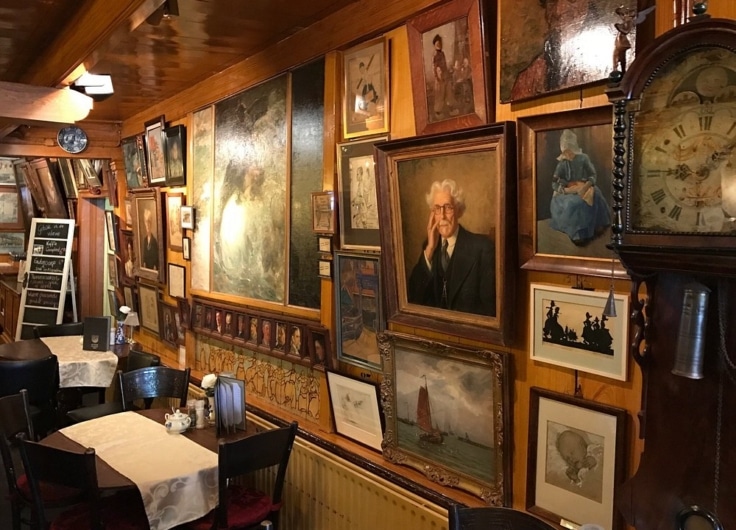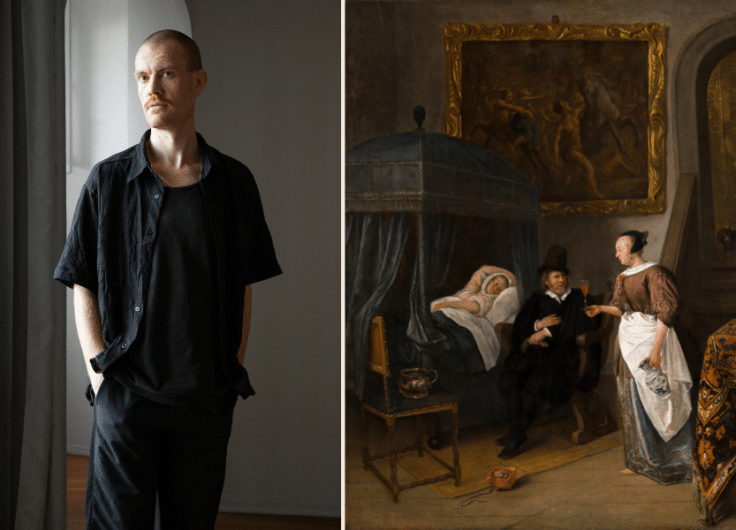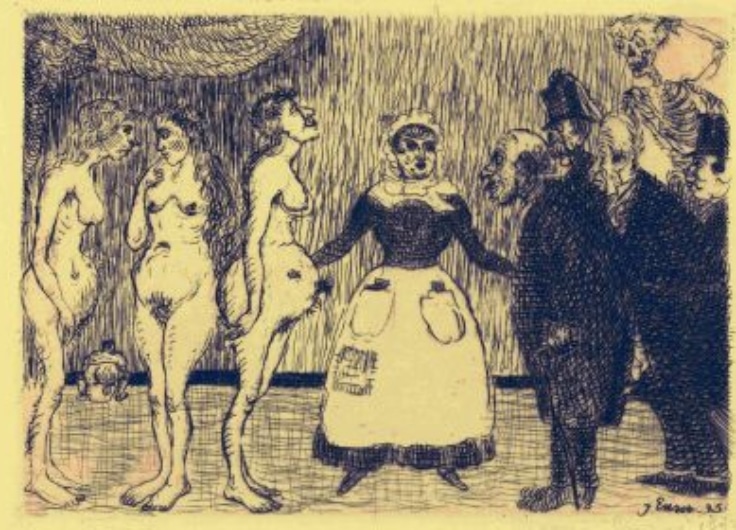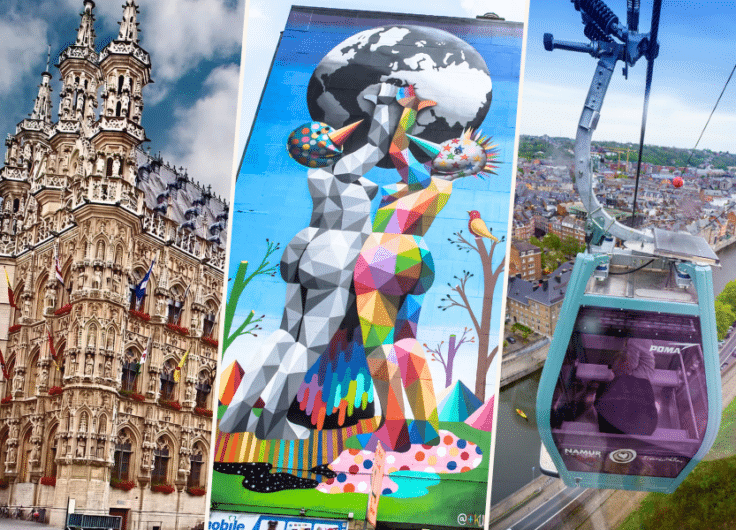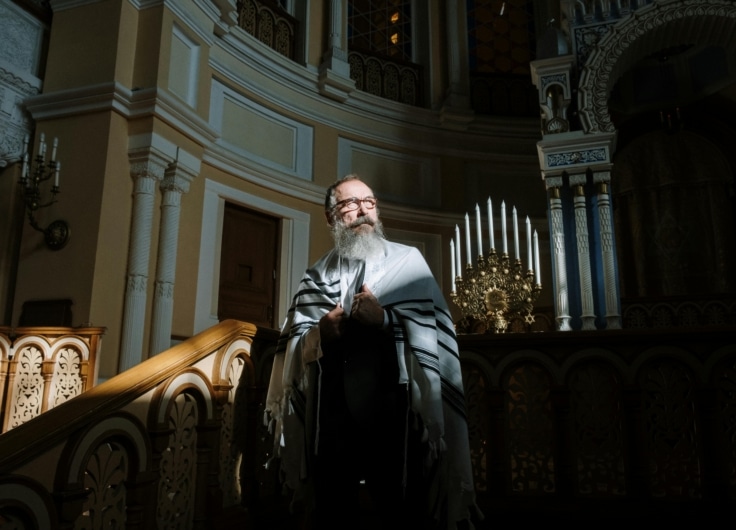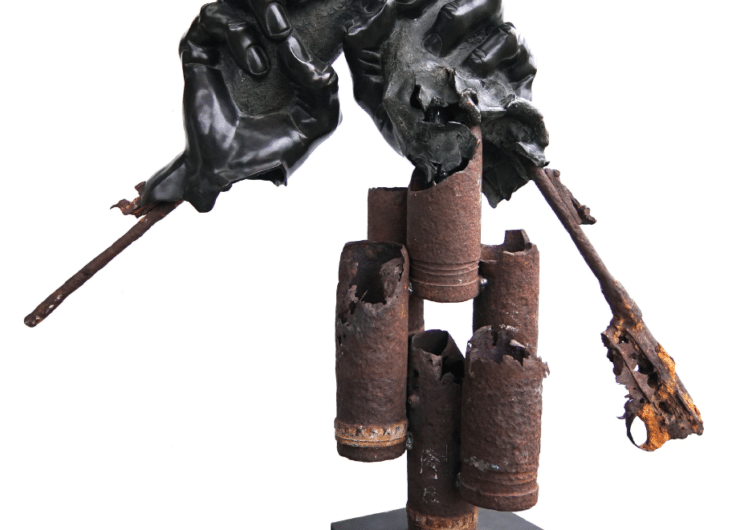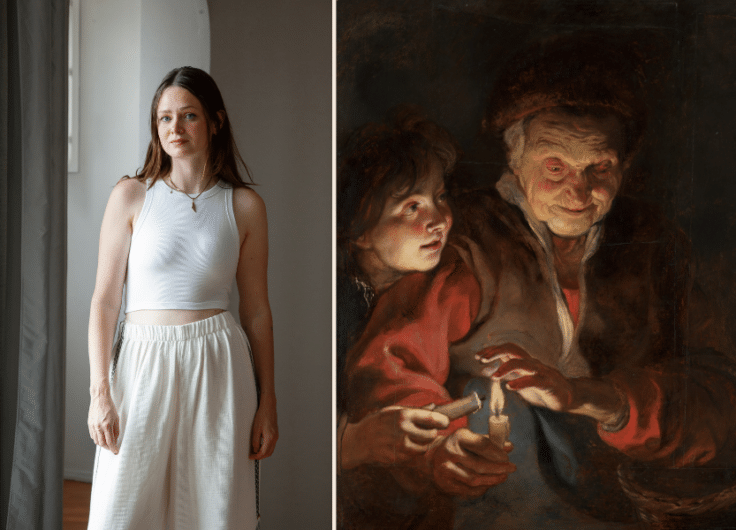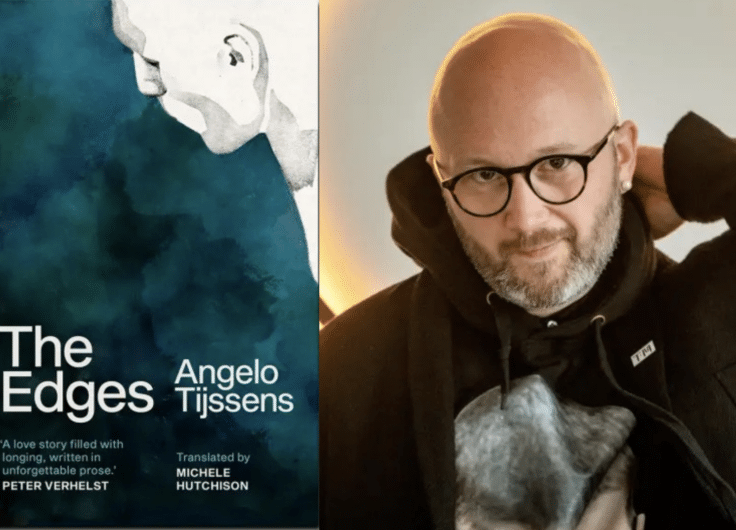After five years of renovation and decolonisation, the AfricaMuseum in Tervuren opened again in late 2018. Congolese-born Dutch writer and policy initiator, Kiza Magendane takes a look at whether the renovation of the exhibits is a success, and wonders whether a European museum about Africa is still relevant these days. He is left with mixed feelings: he learns a lot about the cultures and rituals of the African continent, but the colonial past is presented as a footnote.
It is Sunday afternoon. Tram 44 leaves Brussels-Montgomery for Tervuren, full of people. I sit back, concentrating on my e-book, The Life You Can Save, by the American philosopher Peter Singer. How to Play Your Part in Ending World Poverty is the subtitle. It irritates me that Singer addresses individual consumers and citizens of rich Western countries about “saving lives in Africa” – as if they can change the structural inequalities in the world with their greed.
I look out of the window, thinking about the author’s provocative propositions. I see majestic villas on the outskirts of Brussels. Soon the tram passes through an area where there are only trees to be seen. There is no noise from cars, people or dogs. About a hundred and twenty years ago the Belgian King Leopold II decided that one should pass through this serene peace and quiet, away from all the hustle and bustle of the city, to visit his imposing Congo Museum.
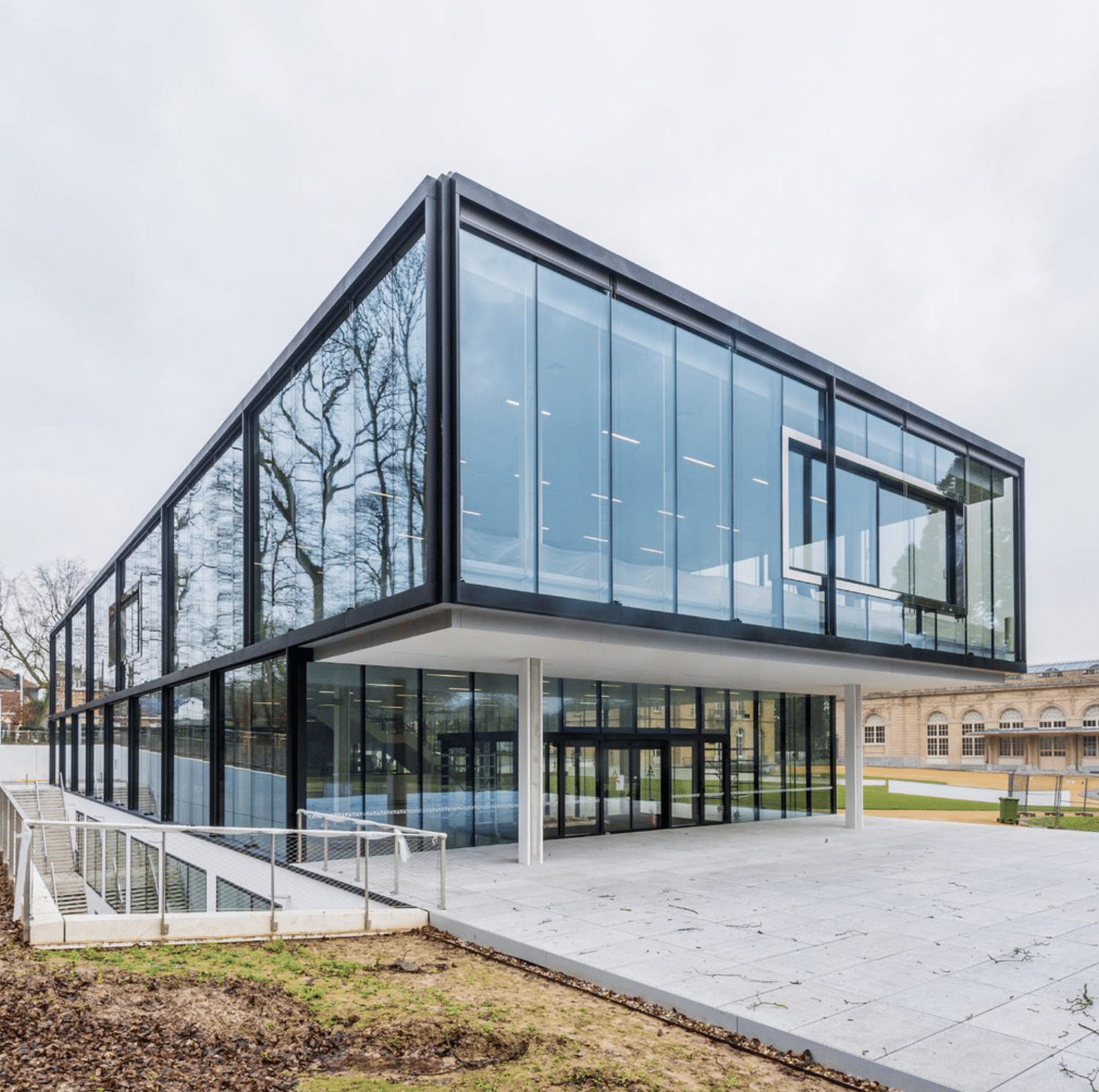 The new visitor centre of the AfricaMuseum
The new visitor centre of the AfricaMuseum© RMCA, Tervuren, photo Jo Van de Vijver
Leopold II wanted to organise a colonial exhibition in Tervuren at the same time as the World Fair in Brussels, in 1897. It was a chance for the whole world – and especially business – to see what economic opportunities were to be found in the so-called Congo Free State. Obviously, the colonial exhibition showed nothing of the suffering and the blood that flowed to make the Belgian king’s dream possible.
I took the train from Antwerp to Brussels Central this morning. From there I took a tram to Montgomery, and now I am on another tram to Tervuren. My intention is to visit the renovated Royal Museum for Central Africa, now called the AfricaMuseum. For five years the museum was closed for restoration. A whole new section was added, and more efficient use is being made of the existing spaces, so the museum can display far more pieces. Besides the renovation, the museum also set itself the goal of renewing the content. The racism of the colonial period had to be binned. Quite a challenge. I wonder to what extent the renewal of the content has succeeded. And I am curious about the relevance of this sort of AfricaMuseum in 2019.
A festival?
The tram reaches Tervuren Centre. From the deserted station the entrance gates of the AfricaMuseum immediately catch my eye. Entrance can be read on the megalomaniac entrance, which looks a lot like the entrance to a festival. Have I come to a festival? I wonder, because I notice that almost everyone from the tram is going, like me, to the renovated museum. It must have been like that in 1897, during the World Fair. Line 44 was built specially as a shuttle tram to take the thousands of visitors to Tervuren and back.
© RMCA, Tervuren, photo Jo Van de Vijver
Once I have got through the new museum entrance, with its hundreds of queuing visitors –reminding me of a festival again – I reach the lockers, where I can leave my things. The children there speak Dutch and French with their parents. This is perhaps one of those rare moments when these children share a space with children of the same age from another language area. The AfricaMuseum as a symbol of connectedness, it seems.
I see a white woman and a black man go down the stairs with their children, in the direction of the new underground passage to the permanent exhibition. I follow them. In the long and impressive basement, I walk past a ten-metre-long wooden canoe. “Everything passes, except the past”, it says, in the three official languages of Belgium and English, on the white wall on the right-hand side of the hall. The ceiling is white, too. The lighting reflects white light off the floor and the white walls, giving you the impression you have ended up in a psychiatric institute or a hospital. You come in here, are overwhelmed by the legacy of colonial history for a few hours and then go home again, a new person, with new insights. With these thoughts I pass through the clinical entrance to the museum.
© RMCA, Tervuren, photo Jo Van de Vijver
Tug-of-war
The first collection consists of sculptures by, amongst others, British artist Herbert Ward (1863-1919). Several roles are portrayed: a woodcutter creating a person, a tribal chief holding a spear, and an old man making a fire with a stick. All of these sculptures are supposed to represent life in the heart of Africa, but they have a particularly racist undertone: the “primitive black body” as part of nature. The most striking image is the so-called Leopard Man, by Paul Wissaert (1885-1951), which was commissioned by the Belgian Minister of the Colonies. It shows a man in a leopard skin with a mask over his head. In his hands are sharp knives, which he is aiming at his victim.
“From 1908 to 1960, the museum was funded by the Ministry of the Colonies. This was reflected in the selection and presentation of the exhibits. As a result, the museum played an important role in the representation of Africa and Africans and in the glorification of the colony and its founders”, it says on the wall. The visitors walk past these sculptures quickly, in what is perhaps the smallest room of the whole museum. There is a general feeling of unease.
“Some aspects of this imagery are still at work”, the explanation continues. “The images and sculptures that you see here were previously part of the permanent exhibition, but no longer belong in that context.”
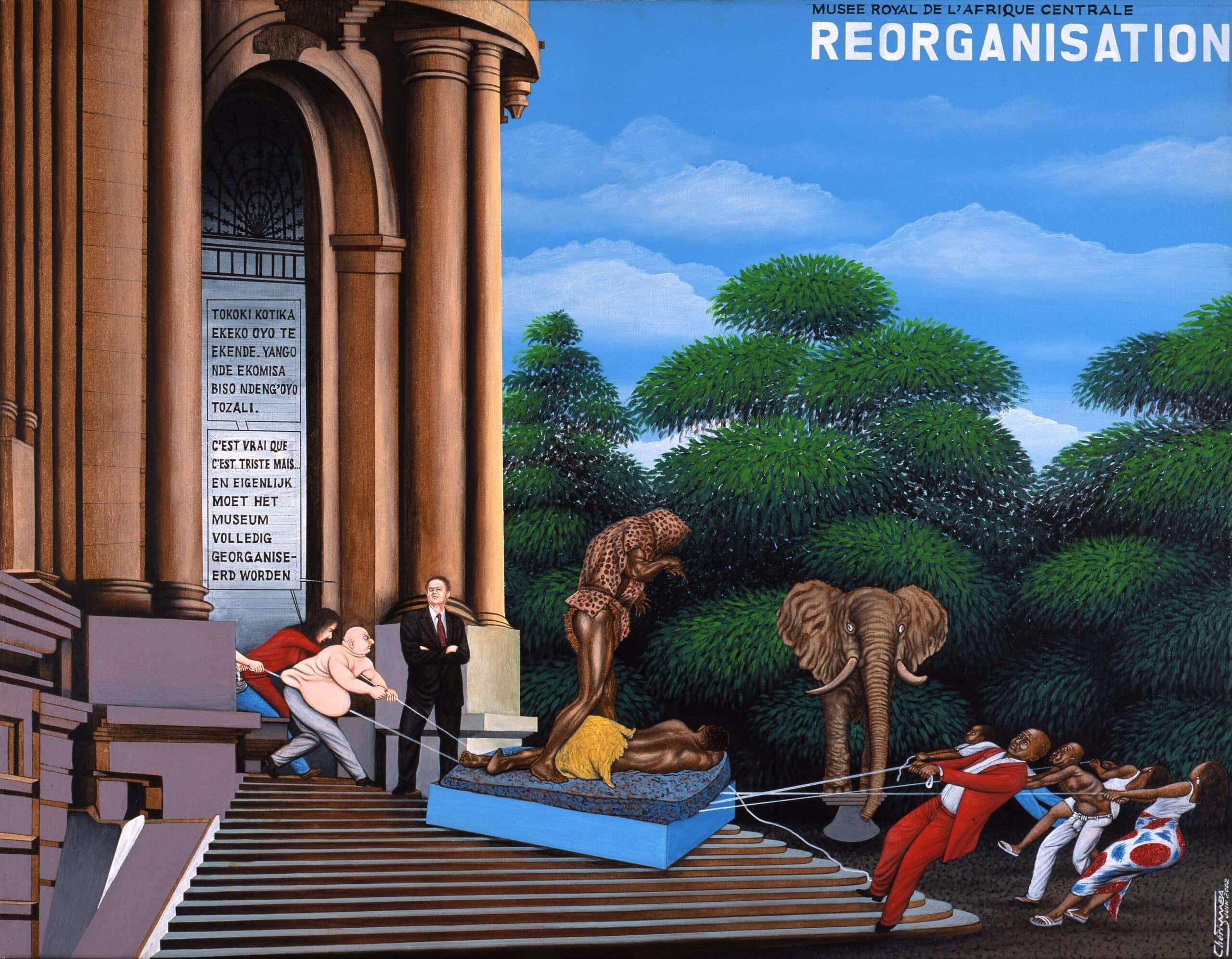 Chéri Samba, Réorganisation, 2002, oil on canvas
Chéri Samba, Réorganisation, 2002, oil on canvas© Collection RMCA
That these once so important sculptures have now been collected in a small room and been given a disclaimer is a result of the reorganisation. On the wall of the small room, this reorganisation is illustrated in a painting by the Congolese artist Chéri Samba. It shows a tug-of-war between two groups. The first group is made up of Congolese, trying to pull the Leopard Man out of the museum. The Congolese want to get rid of the sculpture because it presents a negative image of terrifying, cannibalistic and murderous Congolese. On the other side the museum employees pull the Leopard Man into the museum. “We cannot accept this work being removed”, they say. “It has made us what we are.” The director of the AfricaMuseum, Guido Gryseels, stands between the two groups, his arms folded. “It is true that it is sad, but the museum really ought to be completely reorganized.” he says.
I catch myself feeling uncomfortable with the fact that it is a white man, the museum director, who has the last word in Chéri Samba’s painting. But it is an illustration of reality. This is a Belgian museum, built by a Belgian king in the interests of Belgium and renovated with money from the Belgian federal government. It is logical that a white Belgian man should have the last word.
The Africans in the picture symbolise a group of Congolese and other Africans who want justice for the colonial past. They want a radical break with it, they want a revolution. The protesting museum employees symbolise a group that want to keep the status quo, because they are better off with that. The museum director, who comes between the two groups, chooses the happy medium. He chooses consensus over conflict and peace over justice.
Whitewashing the past?
I leave the small room with mixed feelings. On the one hand, just like those Congolese pulling the sculpture out of the museum, I would prefer to remove all of the controversial works. Moreover, I am firmly convinced that you do not need an AfricaMuseum in Belgium. Send all that heritage back to Congo and other African countries; visit it there if you want to learn something about Africa. That is the only way to break with the colonial past, I think. On the other hand, I have sympathy with the so-called reorganisation, the fact that the museum has put a disclaimer on its collection and, for the first time, offers a critical perspective on the past. Sometimes consensus is more powerful than justice, because justice does not automatically bring peace or improvement.
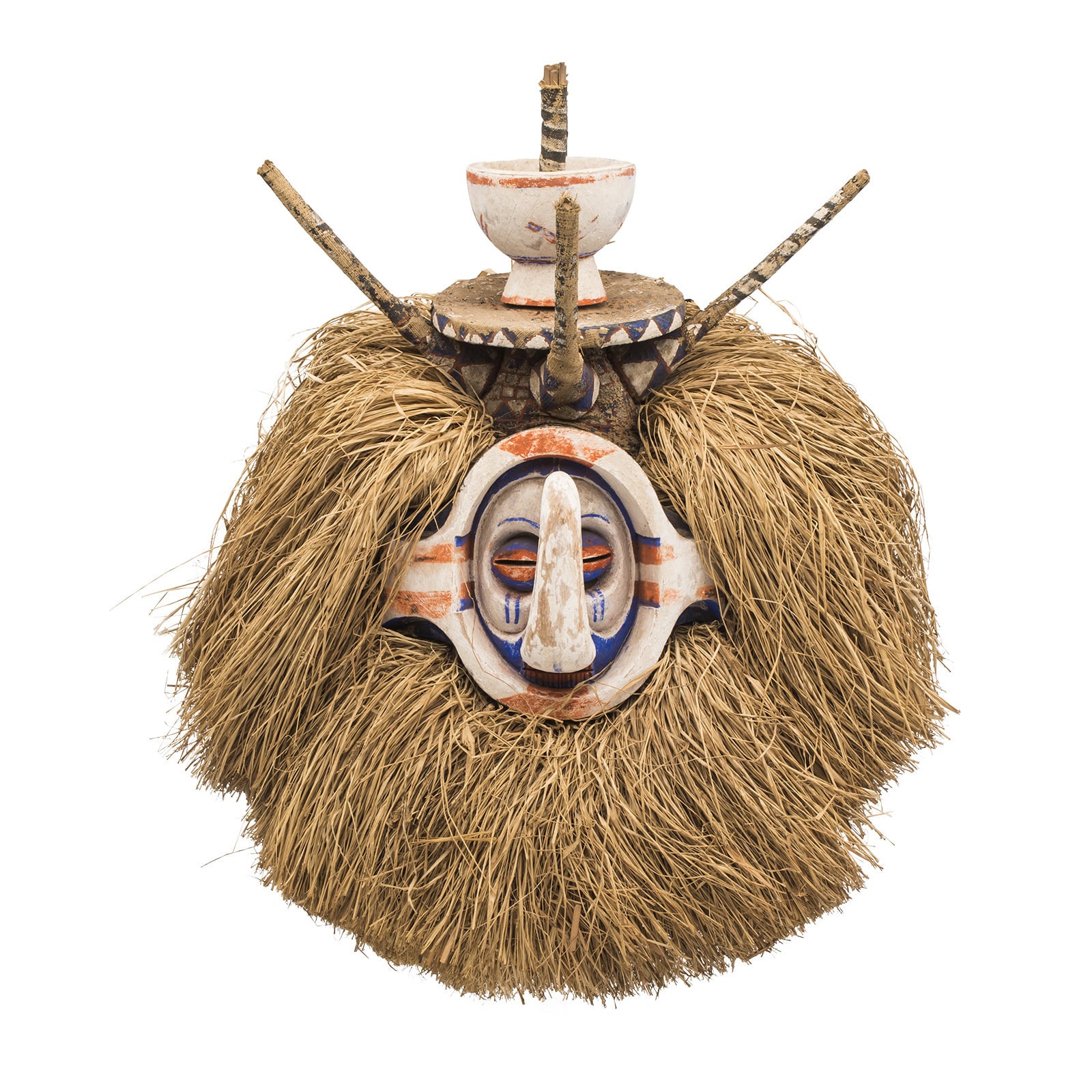 Mukanda mask Yaka, D.R. Congo, 2nd quarter of the 20th century. Wood
Mukanda mask Yaka, D.R. Congo, 2nd quarter of the 20th century. Wood© RMCA, Tervuren, photo Jo Van de Vijver
I continue to have mixed feelings throughout my visit. In the room on the scientific and geological research that the museum carries out with African partner institutions, for example. The description on the wall announces that the museum was built by Leopold II with “profits” from Congo. “With the profits from the Congo Free State, the monarch started an ambitious construction programme.” As such it sounds thoroughly laudable. But why does the museum call it “profits” instead of plunder? I am even more confused by the following sentence: “The fact that revenues from the Congo Free State flowed to Belgium, rather than remaining in Congo, resulted in a furore in parliament.” Exactly what furore was there in parliament?
By using this choice of words, without offering further explanation, the museum gives the impression of whitewashing the past. As I presume that is not the intention, I feel it is a missed opportunity that the museum does not use sharper language in its descriptions to explicitly condemn the unjust actions of the past. Because it is perfectly possible to condemn the actions of the past without condemning Belgium and contemporary Belgians. That is the crux. If you use diplomatic language to describe a controversial colonial past, you act – consciously or unconsciously – as a gatekeeper for that colonial past.
Sometimes consensus is more powerful than justice, because justice does not automatically bring peace
The next rooms contain very rich collections. The cultures of Central Africa (i.e. Congo, Burundi and Rwanda) are presented as richly and in as much detail as possible. Take, for example, the act of giving a child a name. In many African cultures that is no ordinary choice. In a video, several Africans who live in Belgium explain what their names mean and how names are given in their culture. For instance, some tribes have a special name for the first or the seventh child.
I am impressed by the thousands of objects exhibited in the museum and what they say about the many cultures and rituals on the African continent. I learn things I did not know about the Kongo and Luba kingdoms. I learn about the secret societies, parade axes, masks, wooden images and religious beliefs. I learn about how people think about the relationship between life and death in Central Africa, too. The dead live among us and deserve equal respect. They may return one day, through reincarnation, for example. We are linked to those who went before us and to those who will come after us.
© RMCA, Tervuren, photo Jo Van de Vijver
I am not the only one to feel that I have learned something new, been taken to a new world, after a visit to these rooms. It is a world that differs radically from my life in Antwerp. “I thought it was great to find out that Congo and Africa have so many cultures. I didn’t know anything about that”, says a young woman in her early 20s, whose mother is Belgian and father Congolese. Her brother has mixed feelings. He also likes the fact that the museum exhibits this rich African culture for people who, like him, knew little or nothing about it. But he recoils from the exoticism. “If you have an exhibition about Japanese culture, it’s organised by Japanese. It’s only when it comes to Africans that other people can exhibit their culture.” He thinks this should be a museum about Belgium’s colonial past. His sister and mother agree, declaring that they see little of that past in the museum. “It’s certainly been hidden away ”, says the mother.
© RMCA, Tervuren, photo Jo Van de Vijver
The museum does try, as far as possible, to indicate the origin of all the pieces in the collection. That is transparent and reveals the colonial heritage of the whole collection.
Everyone I spoke to agreed on one thing, the flora and fauna collection is spectacular. Thousands of rocks representing the natural wealth of Central Africa. A stuffed giraffe, elephant, okapi and dozens of other stuffed animals. Hundreds, if not thousands, of different sorts of butterflies. Dozens of different sorts of stuffed birds, snakes and snails. I find it staggering. How did they manage to transport all these objects the thousands of kilometres to Belgium? And for what purpose?
Constructive attitude
As I stand in front of the ivory head of Leopold II (which was removed from the central hall and is now stuck away in a corner), I hear two women in their 60s, behind me, discussing French President Emmanuel Macron’s promise to send artworks plundered from the colonies back to their countries of origin. He gave the authors Bénédicte Savoy (France) and Felwine Sarr (Senegal) the task of studying how these artefacts could be returned. In a report to the French president, they advised that all artefacts that were taken to France without permission from Africans should be sent back, if their countries of origin asked for them. Shortly afterwards the president announced that the Musée du Quai Branly in Paris would give back twenty-six artefacts that were plundered from Benin by the French army in 1892. The French president also proposed organising an international conference on the return of colonial cultural heritage in 2019.
It is unlikely that the French president will completely do justice to the colonial heritage, but people do believe his decision on plundered art. Sindika Dokolo, a Congolese businessman who buys plundered art and takes it back to Africa, said that Macron’s decision is unprecedented. “Macron has opened a Pandora’s box”, he said. He is right.
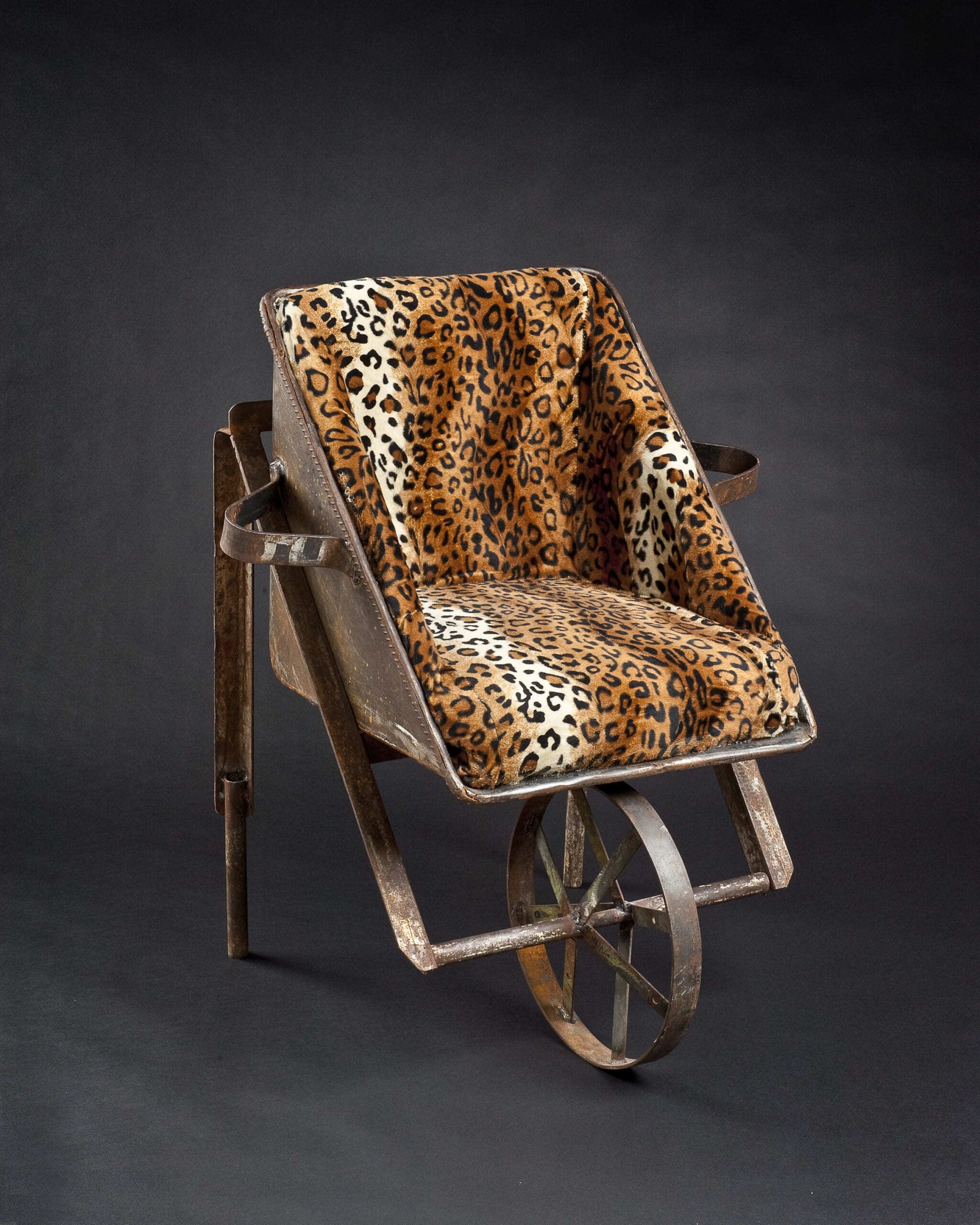 Iviart Izamba, Fauteuil Mobutu, 2010
Iviart Izamba, Fauteuil Mobutu, 2010© Collection RMCA, Tervuren, photo Jo Van de Vijver
In Belgium, too, there is controversy about the museum’s colonial heritage and the more than one hundred thousand objects in the collection. The renewal of the AfricaMuseum’s content and the decolonial narrative that the organisation puts forward is a result of this controversy. But will the museum in Tervuren and other institutions in Belgium ever send back these objects? I think that is unlikely. What is more likely is that the AfricaMuseum will collaborate more with museums in Central Africa and share knowledge and expertise with them. In an interview with Radio France Internationale the museum director, Guido Gryseels, said that what is needed is improved, healthy communication between the former coloniser and the colonised. The return of heritage is not the only solution, he added. Not only because countries like Congo cannot, for the moment, take proper care of such objects, but also because there are many more possibilities than just handing these things back. Digitalization, for example, offers good opportunities for collaboration and knowledge exchange.
© RMCA, Tervuren, photo Jo Van de Vijver
Above all, a constructive attitude emanates from Gryseels and his team, including, amongst others, social anthropologist Bambi Ceuppens. You can see that essential attitude in their museum too. For example, in a special room devoted to contemporary art and culture in Africa and another devoted to Congo after independence. In their own ways both rooms offer a cultural and political introduction to Congo for beginners. You cannot have an AfricaMuseum and only show articles from the past. It is important to present the contemporary reality of the continent. These two rooms represent an effort by the AfricaMuseum to do that, but in comparison with other exhibition areas where, for instance, the flora and fauna are presented extensively, these rooms showing contemporary Congo are rather modest.
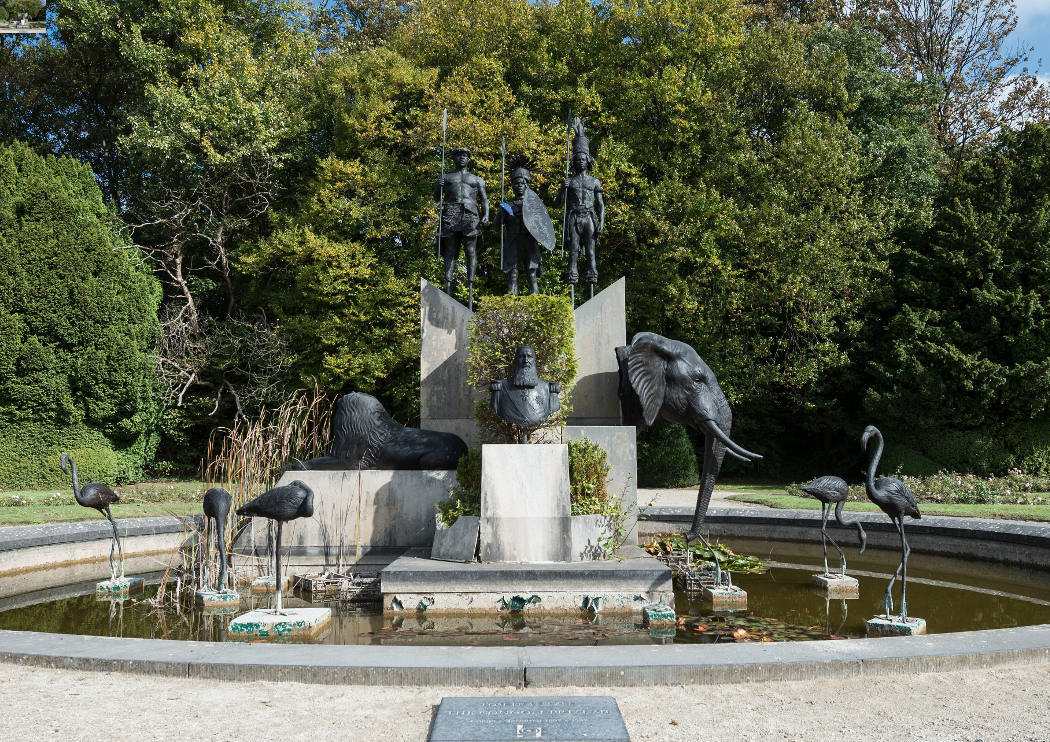 Tom Frantzen, The Congo I Presume, 1997, garden Africamuseum
Tom Frantzen, The Congo I Presume, 1997, garden AfricamuseumThe same goes for the room that has been specially set up to spotlight the African diaspora in Belgium. I came to the museum full of expectations about this diaspora room, especially as it was presented as the ultimate proof of renewal and the fact that the museum aims to be inclusive. But mainly I am disappointed with it. “It’s a corner. It looks as if the museum decided, under external pressure, here’s your diaspora room for you, do something fun with it”, I commented to a friend after my visit. With the knowledge I have now I know that this was perhaps too sharp a conclusion, because all changes begin with small steps. But it is disappointing that stuffed animals and other fauna play such a prominent role in the museum, because for me they still symbolise the colonial domination of Belgium over Central Africa. By displaying the imposing plants and stuffed animals so prominently, you are still acting in the spirit of Leopold II and showing what Belgium, as a country, was capable of, by conquering territory and taking control of the people and the nature.
A museum for everyone
Back in tram 44 heading for Brussels, I wonder what children will have learned during an afternoon at the AfricaMuseum? I think that they mainly remember the elephant, the giraffes and the wonderful butterflies. I imagine that, for schoolchildren, the museum chiefly offers adventure, the opportunity to be enchanted in a new world for a few hours. But will they have learned anything about the colonial past? I doubt it. Not because it gets no attention but because, in my opinion, it is presented as incidental, a footnote. You really have to look for it. But perhaps that is not a disaster. Indeed, Belgium is a country of compromise. And that might explain why I go home feeling that I have visited a museum of compromise, a museum that aims to be for everyone, that wants to do justice to everyone’s feelings.
Will visitors have learned anything about the colonial past? I doubt it
The tram has almost reached Brussels Montgomery. In front of me there is a Flemish mother with her son, in his twenties. They tell me they thought it was fantastic. “The museum used to have more character, now it’s really big and spacious”, says the mother. “But it is fascinating.” Her son agrees. “It’s impossible to see everything in one visit. We’ll be back”, says the mother. I echo that.
Meanwhile, I have gone back to my e-book and am trying to follow philosopher Peter Singer’s argumentation. Perhaps he is right, and one person can make a difference, leave a mark on history. For the Belgians, Leopold II is a man who made a difference. That explains the presence of his statues all over the country. It explains the establishment of the museum that I have just visited and the existence of the tram line I am taking. This tram represents the past, the present and the future of Belgium, I say to myself. That is true for the AfricaMuseum, too. It is worth visiting, because it gives you surprising insight into Belgium. Because everything passes, except for the past.


